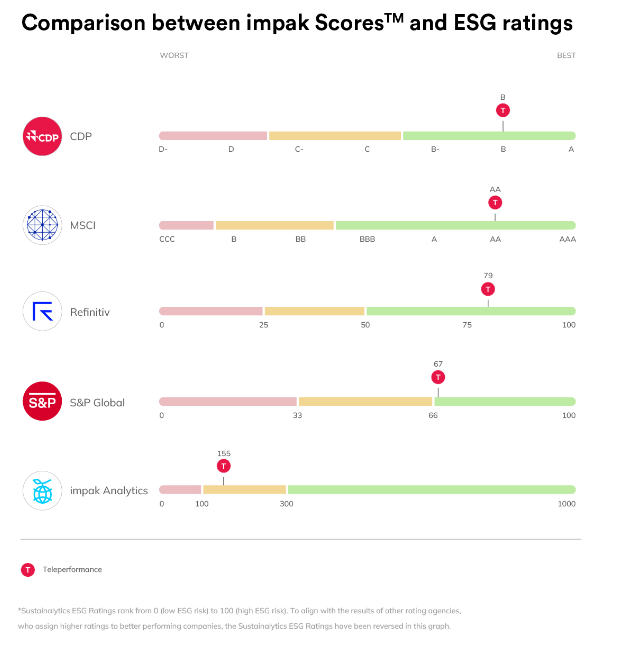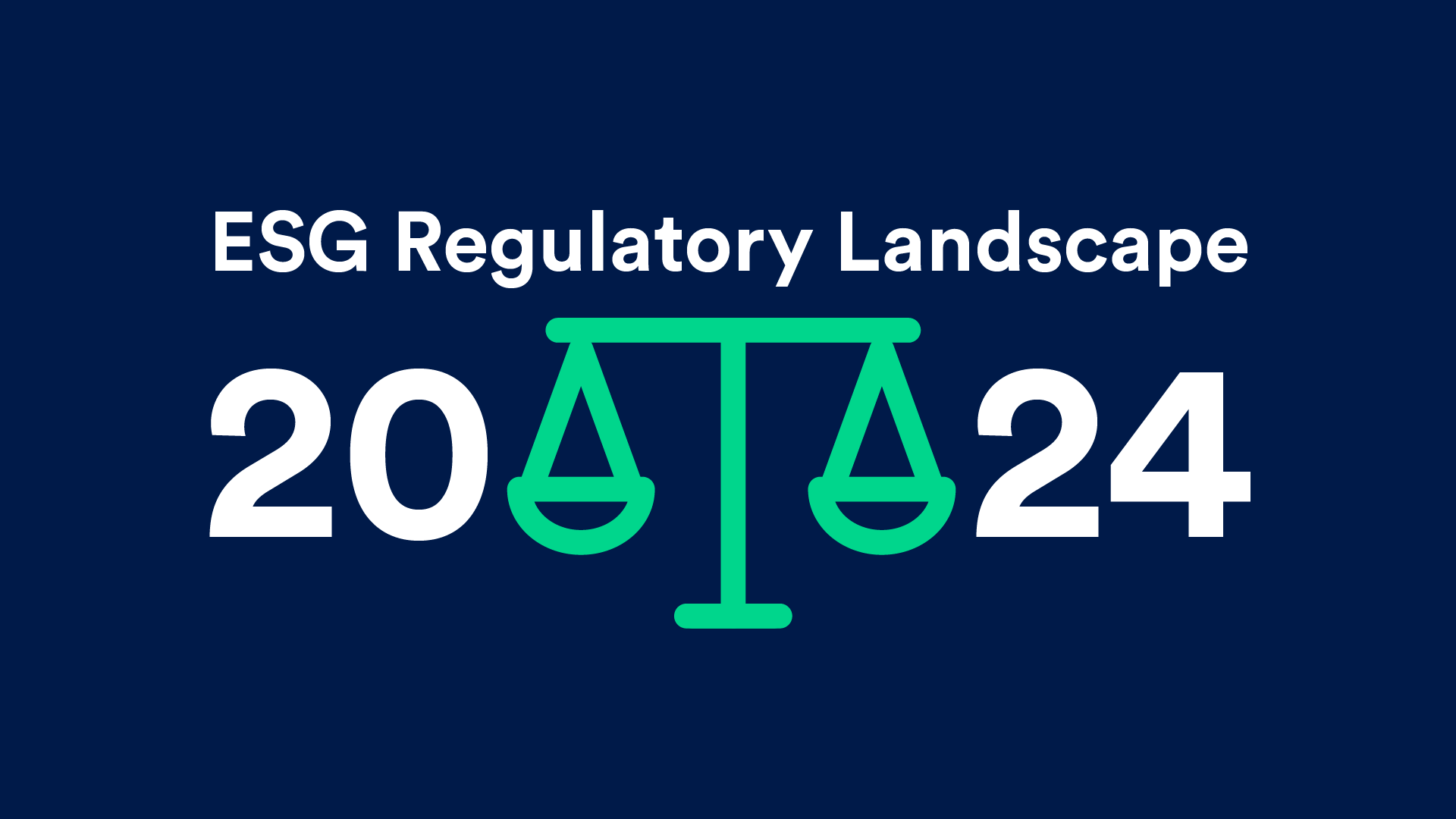Lost in Transition, Teleperformance’s journey from star student to bottom of the class
Lost in Transition, Teleperformance’s journey from star student to bottom of the class
Teleperformance, the ESG favourite (before the downfall)…
With revenues of €8.1 billion in 2022 and 410,000 employees in 91 countries, Teleperformance is the undisputed world leader in call centers and other remote business services. Recognized as one of the best employers in the world by Great Place to Work® and having joined the CAC 40 ESG index in 2022, Teleperformance seems to check all the requirements to be a top performer on ESG.
However, in 2022, an investigation was opened by the Colombian Ministry of Labour for violations of labour standards (obstruction of union work, deplorable working conditions, moral harassment) in connection with its moderation activities of TikTok content. Following these revelations, the value of the Teleperformance stock, which is part of the CAC 40, plunged by 34%, a loss of 5 billion euro in market capitalization in just a number of hours.
However, this is not the first time that the company has been accused of poor working conditions. In 2020, a collective led by the international federation Uni Global, filed a complaint before the OECD to denounce the “dangerous” working conditions of employees in the face of the Covid-19 epidemic in ten countries, including France, where the company is accused of not having implemented sufficient distancing measures. In 2019, the association, Sherpa, and the union, UNI, attacked the company for non-compliance with its duty of care.
Despite these failures, the company was favoured by ESG investors, who held more than 20% of its capital. In addition, MSCI and Sustainalytics, two of the largest non-financial rating agencies, had given Teleperformance good ESG scores.
How can we explain the discrepancy between the reality of practices and ESG scores?

Financial materiality
Non-financial rating agencies analyze companies through the prism of financial materiality, exposing themselves to the risk of not casting a wide enough net andfavouring short-term profit implications. Such an approach is detrimental to both long-term financial performance and sustainable development.
Data collection: quantity vs. quality
The best ESG companies are not necessarily the most sustainable companies. ESG data is focused on the risks a company is exposed to and the collection of information that will minimize those risks and increase the company’s profit without considering stakeholders. The starting point is not the needs of stakeholders, but financial optimization, i.e. minimizing risks and increasing the company’s performance. (See Is ESG becoming a four-letter word?… from ESG to ESGi).
Example: performance and results
Thus, although Teleperformance demonstrates that over the course of the year more than 1 million hours of training were provided to its employees, this indicator does not allow us to assess the reality of the measures implemented by the company. ESG data tends to confuse performance with results (output vs. outcome).
Controversies
Another crucial point to consider is a company’s exposure to controversies. For ESG rating agencies, this risk was considered moderate for Teleperformance, while for impak Analytics, it was high. What explains this difference? Impact intelligence. Impact puts the notion of stakeholders, their needs and vulnerability at the heart of the issue.

Thus, ESG data does not prevent and protect against this situation but amplifies the reputational risk. Rating agencies focus on the quantity of information published rather than qualitative analysis.
How to restore investor confidence?
However, it is important that investors do not lose faith. While the Teleperformance case was undoubtedly discouraging for investors seeking to truly consider ESG factors in their decision-making, it was far from unavoidable. The Teleperformance example is a clear demonstration of the need for investors to have access to in-depth information about the real impacts of issuers. Only when investors are equipped with that information will we be able to avoid a repeat of the Teleperformance controversy.
Regardless of the methodology or idealogy espoused by ratings agencies, transparency is essential. Transparency around the data, sources and methodology used will allow investors to understand the scope covered by the ratings and analyses that they are using in their decision-making processes.
For instance, in contrast with approaches rooted in financial materiality, which focuses on the financial risks posted by ESG issues to a company, a double-materiality based approach assesses the impacts of a company on the environment and on society at large. Since 2018, impak Analytics’ impact analyses have been founded on the double materiality approach and on the Impact Management Project (now IMP norms, hosted by Impact Frontiers). This prism is essential in order to ensure a comprehensive image of a company’s impact and its performance on ESG issues. A focus on quantity of data reported (without assessing it from a qualitative perspective) and a failure to examine the scope and value of indicators or mitigating activities can lead to blind spots for investors. The wider lens of impact analysis reduces the risk of such blind spots.
Teleperformance today
Following the controversies surrounding the company, Teleperformance appears to have taken some actions to avoid a reoccurrence in the future. For instance, the company announced that it will increasingly use artificial intelligence in its content moderation activities and will introduce improved wellness programmes for content moderators.
When implementing such mechanisms, it is a question of introducing quality measures, ideally developed with input from the affected stakeholders, rather than quantity.
While these steps appear to move the company in the right direction, only time will tell whether they will have a true impact on the experience of the company’s stakeholders, particular those who are particularly vulnerable, such as the employees who previously experienced poor working conditions.
Written by Marion Bitoune et Laura Hegarty
Sources
- Après la Colombie, Teleperformance obtient la certification indépendante de Bureau Veritas sur l’utilisation et l’inclusion de la norme internationale ISO 26000 dans six autres pays | Business Wire
- Teleperformance : signe un accord syndical en Colombie | Zonebourse
- Teleperformance : Face à la controverse ESG, Teleperformance sort de la modération de contenus les plus offensants – BFM Bourse
- Le géant français des centres d’appel mis en demeure de mieux protéger ses salariés – Basta!
- Teleperformance rejoint l’indice CAC 40 ESG
- Le géant français des centres d’appel mis en demeure de mieux protéger ses salariés – Basta!
- Orpea et Teleperformance : ces scandales qui mettent en lumière les risques ESG | Les Echos
- Teleperformance et les dangers d’un ESG « normatif »
- L’affaire Teleperformance, nouveau revers pour la notation ESG – Little Wing
- Teleperformance : Face à la controverse ESG, Teleperformance sort de la modération de contenus les plus offensants – BFM Bourse
- Teleperformance a fait son entrée au CAC 40
- Teleperformance : ce rapport fait tomber le mythe de l’entreprise où il fait bon travailler | L’Humanité
- Teleperformance s’effondre en Bourse à cause d’une enquête en Colombie – L’Agefi
- Comparaison de trois méthodologies ESG : les différences de notations des bases de données extra financières – Archive ouverte HAL
- Affaire Orpea : mais à quoi servent les notations ESG ?
- Teleperformance rejoint l’indice CAC 40 ESG | Business Wire
- Teleperformance Announces Continuation of Full-service Content Moderation
You may also like

Why single materiality is not good risk management
By impak Analytics
2024 ESG Regulatory Landscape
By impak Analytics